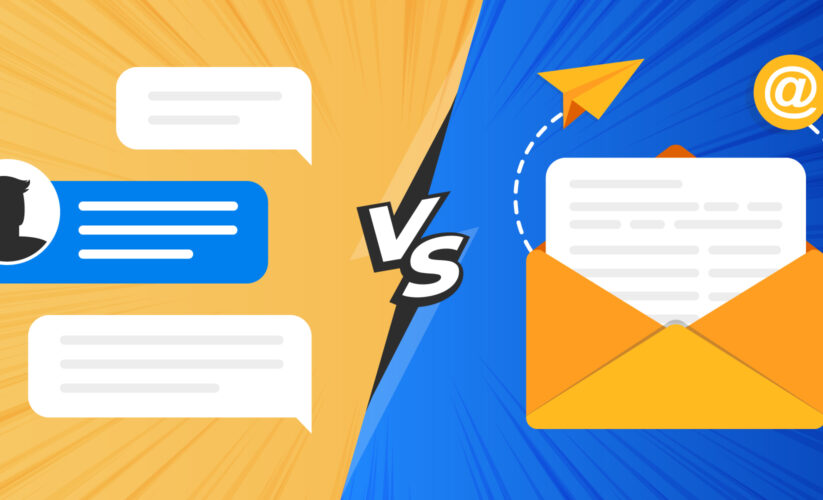
Email Marketing vs. Digital Marketing: Which One is Best?
Today, in the digital era, marketing strategies have evolved significantly. Businesses now leverage various online channels to engage their audience effectively. Among the most effective strategies, Email Marketing vs. Digital Marketing often sparks debate. While both share similarities, they cater to different objectives and business goals. In this blog, we’ll compare their differences, advantages, and best use cases to help you choose the right strategy for your business.
What is Email Marketing?
Email marketing is the method of connecting with your audience through emails. It is a direct way in which businesses send newsletters, promotional offers, or updates to subscribers who have opted onto their email lists. Key Features of Email Marketing: Personalization: Enables businesses to craft messages tailored to individual tastes. Cost-Effective: Minimum investment as compared to other channels of marketing. Direct Engagement: It reaches the inbox of the potential and current customer directly.
High ROI: According to studies, email marketing delivers a return on investment of $36 for every $1 spent.
Advantages of Email Marketing:
- Targeted Communication: Send specific messages to segmented lists.
- Measurable Results: Track open rates, click-through rates (CTR), and conversions.
- Customer Retention: Build long-term relationships with customers.
Limitations of Email Marketing:
- Spam Concerns: Emails might end up in the spam folder if not optimized correctly.
- Over-Saturation: Audiences can feel overwhelmed if emails are too frequent.
- Deliverability Issues: Poorly structured emails may not reach the intended inbox.
What is Digital Marketing?
Digital marketing encompasses all activities of marketing that are online. It involves a broad range of channels: social media, search engines, content marketing, and even paid advertisements, not to mention email marketing.
Key Characteristics of Digital Marketing:
- Omnichannel Approach: This reaches your target audience on multiple platforms.
- Data-Driven Insights: Fosters analytics toward tracking and refining campaigns.
- Flexibility: Suits enterprises in all sectors and of all dimensions.
Benefits of Digital Marketing:
- Greater Reach: Can reach audiences on a global scale across various platforms.
- Brand Awareness: Creates a strong online presence.
- Versatility: Combines multiple strategies for comprehensive outreach.
Limitations of Digital Marketing:
- High Competition: Requires unique strategies to stand out.
- Budget Constraints: Some channels, like paid ads, can be expensive.
Email Marketing vs. Digital Marketing: The Key Differences
- Aspect
- Email Marketing
- Digital Marketing
- Scope
- Focuses solely on emails.
- Encompasses various online platforms.
- Audience Reach
- Limited to email subscribers.
- Broader, reaching users across multiple channels.
- Cost
- Relatively low-cost.
- May involve higher costs depending on the channels.
- Personalization
- Highly customizable for individuals.
- Personalization differs from platform to platform.
- Analytics
- Tracks specific metrics of emails.
- Gives insights for several aspects of a campaign.
- ROI
- High ROI if done correctly.
- ROI depends on the platform and way of strategizing.
Which Strategy to Choose?
When to Choose Email Marketing:
- You already have a subscriber base.
- You want to nurture relationships with your existing customers.
- You have to restrict your digital campaigns due to budget constraints.
When to Choose Digital Marketing:
- You want to create brand awareness on a larger scale.
- Your business has to target a diverse audience across platforms.
- New products or services about to hit the market that need sudden recognition.
- Combination of Email Marketing with Digital Marketing
Instead of taking a pit of email marketing against digital marketing, businesses can bring them into one holistic combination. Here is how:
- Email List Growth Through Social Media: Increase your emailing list by sharing the sign-up for your emails via social channels.
- Email Retargeting: Use the cookies on a website to retarget users visiting that site by sending out custom emails.
- Repurposing Content: Share your email content across other digital channels for maximum exposure.
- Combined Data Analysis: Integrate your email metrics with your digital analytics for a holistic view of performance.
Real-World Experiences and Case Studies
Case Study 1: An E-commerce Brand
One of the e-commerce leaders combined email marketing with digital marketing to see a sales surge during the holidays. By offering special discounts in emails to subscribers and simultaneously running parallel Google Ads campaigns, they see a 40% increase over last year in sales.
Case Study 2: A Local Business
The local bakery sent out emails with personalized birthday offers, while simultaneously running targeted Facebook ads to acquire new customers. The outcome? Increased foot traffic and a revenue increase of 20%.
Conclusion:
How to Find the Right Balance?
The choice between email marketing and digital marketing depends on the goals of your business, the budget, and the target audience. Email marketing is very effective in building personal relationships, while digital marketing covers a wider audience. When integrated effectively, these strategies can complement each other, amplifying your overall marketing efforts.
At Blog DevZev, we are of the belief that one should move with the trends of marketing. By integrating these two approaches into your strategy, you’ll be able to take full potential of your brand for long-term success.



